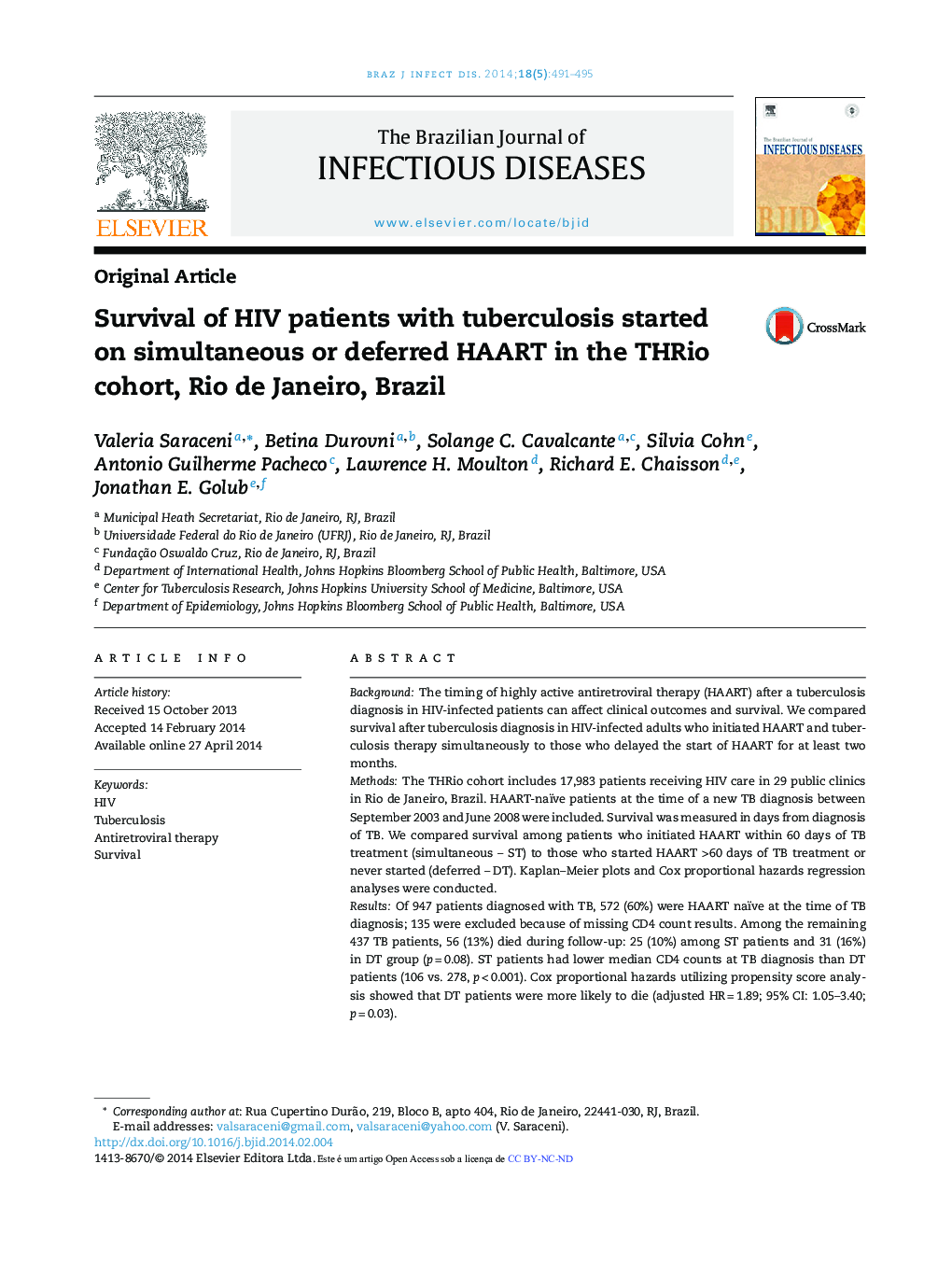| Article ID | Journal | Published Year | Pages | File Type |
|---|---|---|---|---|
| 3343949 | The Brazilian Journal of Infectious Diseases | 2014 | 5 Pages |
BackgroundThe timing of highly active antiretroviral therapy (HAART) after a tuberculosis diagnosis in HIV-infected patients can affect clinical outcomes and survival. We compared survival after tuberculosis diagnosis in HIV-infected adults who initiated HAART and tuberculosis therapy simultaneously to those who delayed the start of HAART for at least two months.MethodsThe THRio cohort includes 17,983 patients receiving HIV care in 29 public clinics in Rio de Janeiro, Brazil. HAART-naïve patients at the time of a new TB diagnosis between September 2003 and June 2008 were included. Survival was measured in days from diagnosis of TB. We compared survival among patients who initiated HAART within 60 days of TB treatment (simultaneous – ST) to those who started HAART >60 days of TB treatment or never started (deferred – DT). Kaplan–Meier plots and Cox proportional hazards regression analyses were conducted.ResultsOf 947 patients diagnosed with TB, 572 (60%) were HAART naïve at the time of TB diagnosis; 135 were excluded because of missing CD4 count results. Among the remaining 437 TB patients, 56 (13%) died during follow-up: 25 (10%) among ST patients and 31 (16%) in DT group (p = 0.08). ST patients had lower median CD4 counts at TB diagnosis than DT patients (106 vs. 278, p < 0.001). Cox proportional hazards utilizing propensity score analysis showed that DT patients were more likely to die (adjusted HR = 1.89; 95% CI: 1.05–3.40; p = 0.03).ConclusionHAART administered simultaneously with TB therapy was associated with improved survival after TB diagnosis. HAART should be given to patients with HIV-related TB as soon as clinically feasible.
